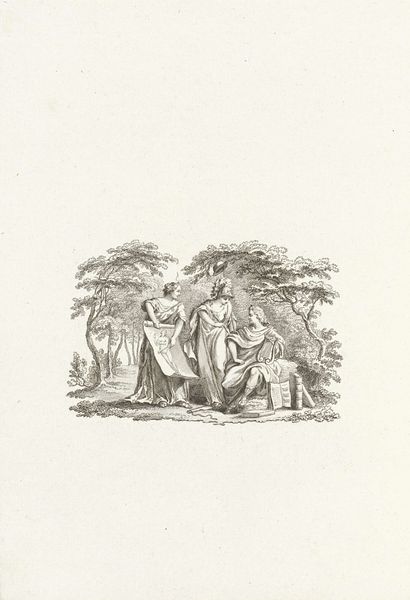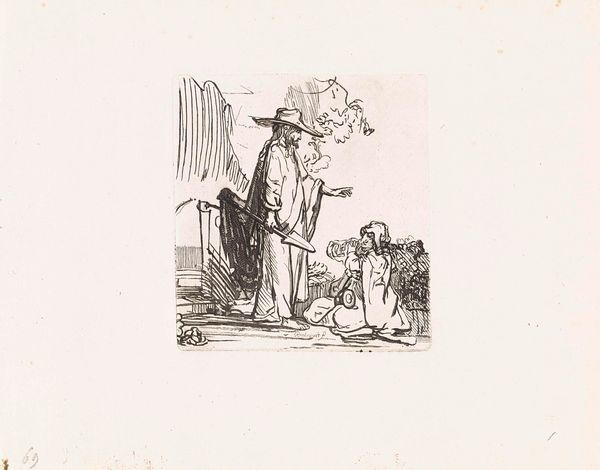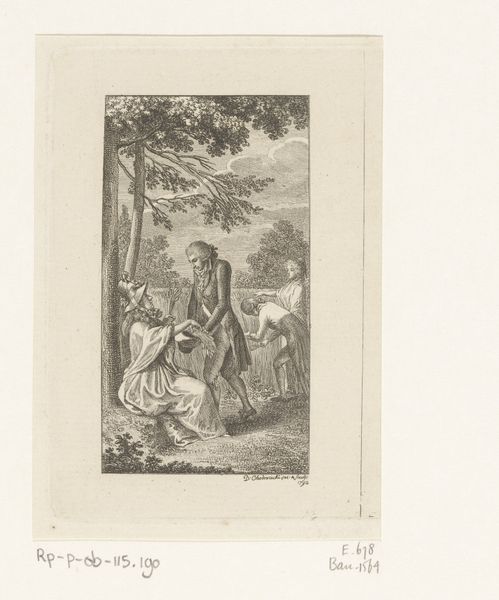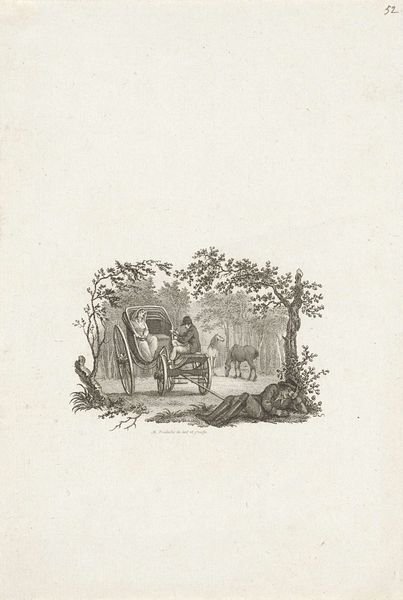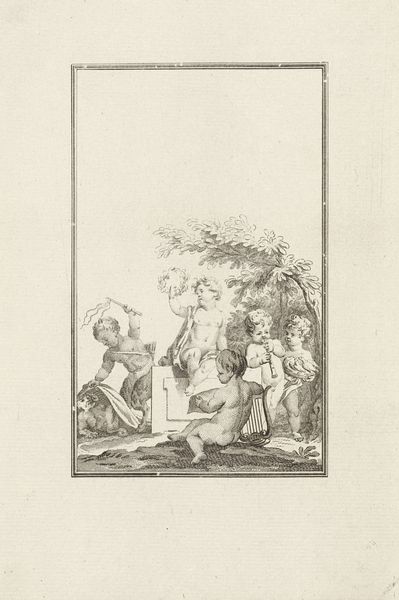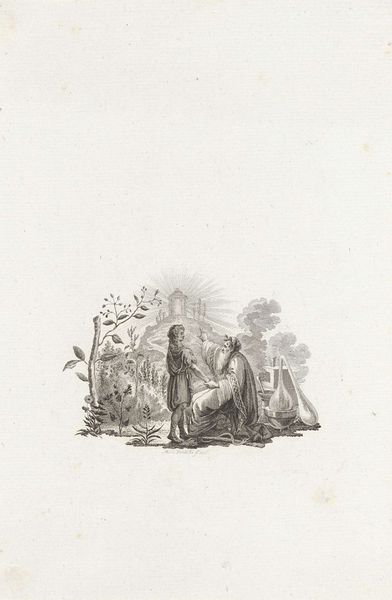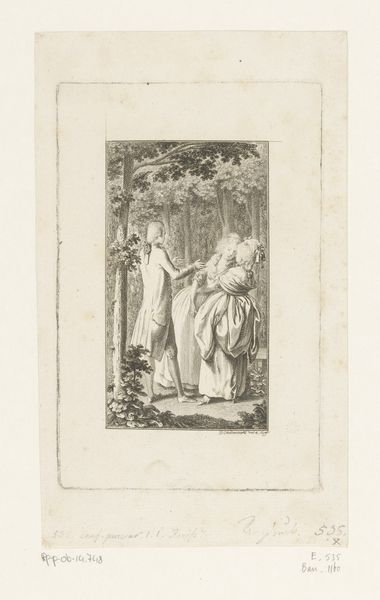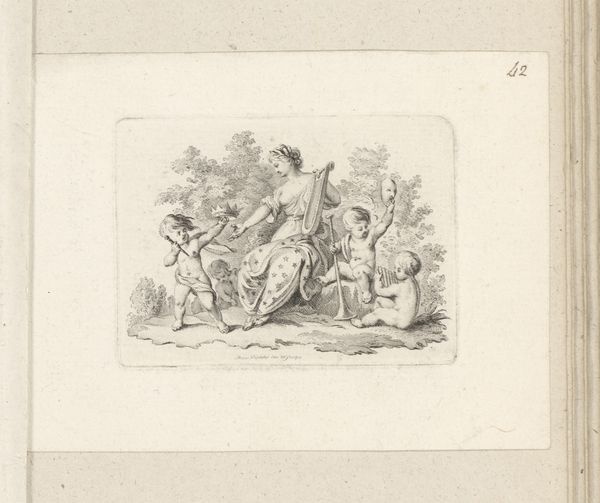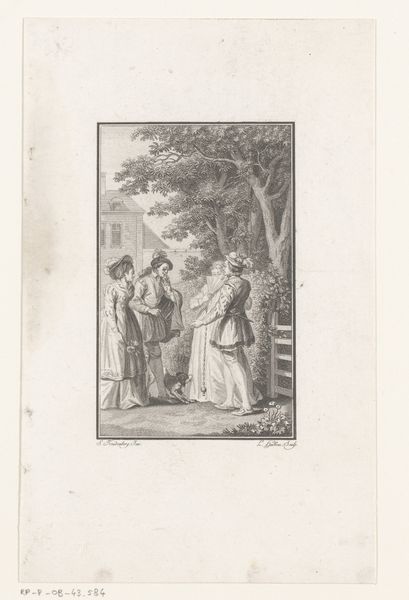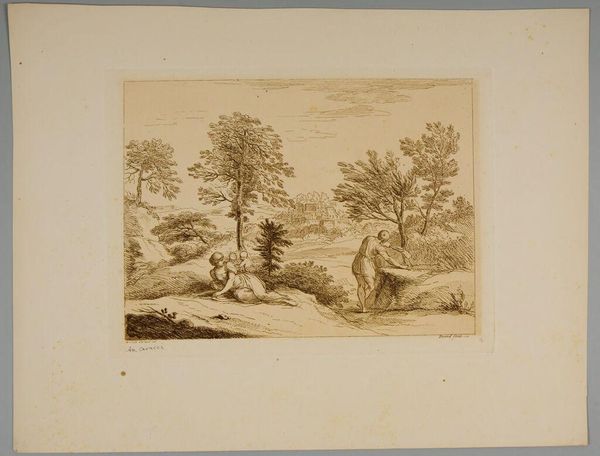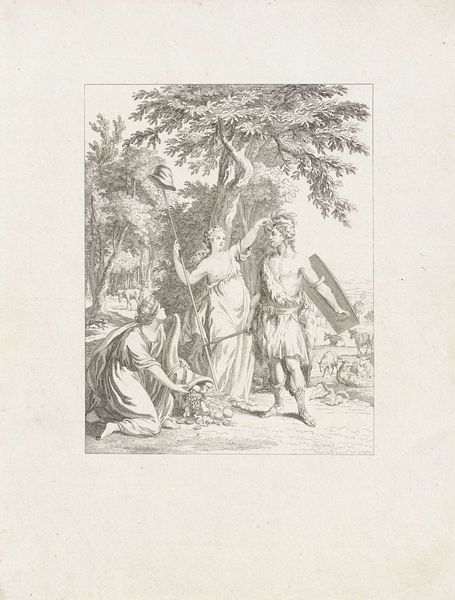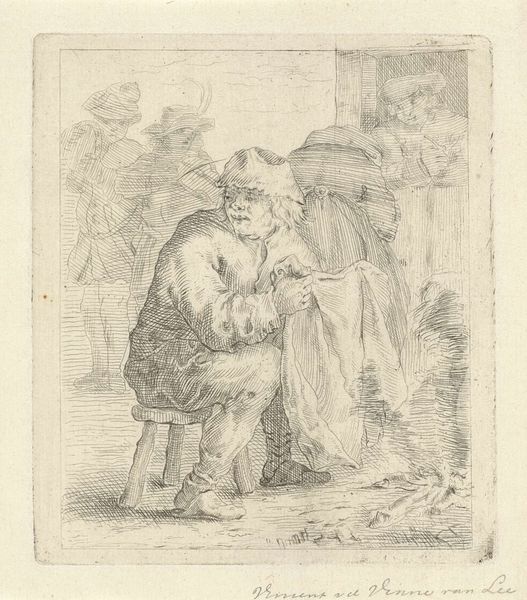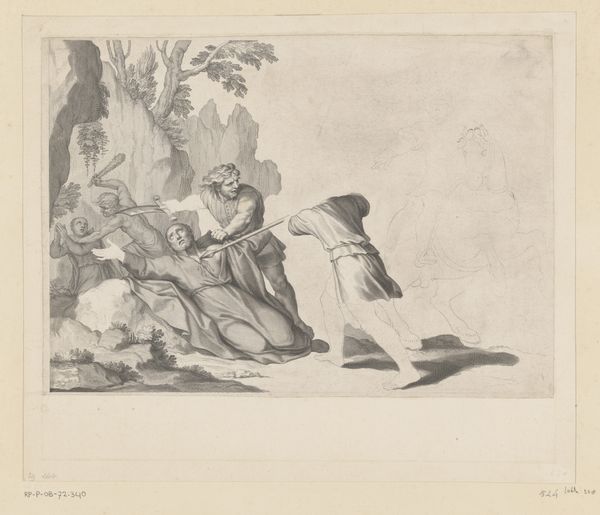
Dimensions: height 81 mm, width 118 mm
Copyright: Rijks Museum: Open Domain
Editor: So, here we have "Two Women with Fruits and Flowers," a 1773 engraving by Reinier Vinkeles, currently held at the Rijksmuseum. The delicate linework gives it such an ethereal quality, almost dreamlike. How do you interpret this work in its historical context? Curator: Well, let's consider the cultural backdrop. In 1773, engravings like this circulated widely, impacting public perception. This piece utilizes the visual language of idealized femininity and bountiful nature. Ask yourself, what role did prints like this play in shaping social ideals? Editor: That's interesting... the "idealized femininity." So these aren’t necessarily portraits of real women? More like representations of a particular feminine virtue? Curator: Precisely! Consider how these images participated in the socio-political dialogues of the Enlightenment, promoting notions of pastoral leisure and feminine virtue. Who do you think was consuming these images and why? Editor: Probably upper-class households wanting to display their refinement and taste? But weren't there tensions, even criticisms, of that kind of lifestyle back then? Curator: Absolutely! There was growing social critique of aristocratic excess, even as images like this perpetuated that image. Could this print also be read ironically, perhaps a commentary on the very values it seems to celebrate? Editor: I hadn't considered that! Seeing it as potentially subversive… it definitely adds a new layer of complexity. Curator: Indeed. It's about understanding the public role of art – not just reflecting the status quo, but also negotiating and sometimes even challenging it. Think about who had access to make and sell these kinds of prints, too. Editor: It really makes you consider the social impact prints had, circulating these ideals so widely. I'll definitely look at other engravings with that perspective from now on! Curator: Exactly! It's all about understanding art not just as beautiful objects, but as active participants in historical conversations.
Comments
No comments
Be the first to comment and join the conversation on the ultimate creative platform.
